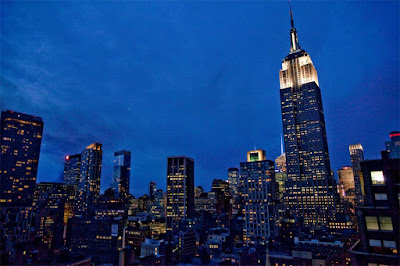As Philip, Seth, and Michael Pilevsky argue, when we conjure images of iconic American landmarks we call to mind things like the Statue of Liberty, the Grand Canyon, the Empire State building, and the Golden Gate Bridge. From coast to coast, many natural and artificial landmarks act as symbols of American prosperity, strength, and beauty. Even in dark times of American history, these landmarks have stood as representations of the American spirit and dream. It was during the Great Depression, in fact, that America built arguably its most prominent landmark building - the Empire State Building. The Empire State Building was built as a sign to the American people that despite hard times, the nation was still strong and still fighting for its future. Still among the tallest buildings in New York, it remains an eternal symbol of the New York City skyline. (For more on the fascinating history of this most iconic of New York's buildings, please see 'Philips International, Excellence In Hotel Development' on philips-international.com)
Recently, the owner of the Empire State Building, Malkin Holdings, announced that they were seeking to fold the building into a real estate investment trust (REIT), called the Empire State Realty Trust. Comprise of more than seventeen New York properties, the announcement of the Empire State Realty Trust created a massive uproar of excitement with New York’s real estate developers. In terms of business, the Empire State building offers not only a vast amount of office space, but also generates more than $85 million annually with over 3.6 million tourist visits to one of the buildings two observation decks.
Tourism aside, the building still stands as an important potential revenue generator. The building’s tourism revenue may already be at its peak, but substantial revenue will come from the building’s office leases once renovations are complete on the building’s interior. Additionally, the building holds potential retail space. For developers such as Philip Pilevsky and his sons, Michael Pilevsky and Seth Pilevsky of Philip International, a real estate development and management firm, this opportunity is exciting for a number of reasons. It is a chance to be involved in the management of one of our country’s most iconic landmarks, in addition to it being a sound business decision. It also demonstrates the truth that for Philips International, the importance of relationships in real estate cannot be overestimated.
That is why Philip, Michael Pilevsky, and Seth Pilevsky partnered with Joseph Tabak in June of 2013 and announced a $2.1 billion offer for the iconic tower with plans hinging on the retail aspect of the tower’s retail and commercial space, including a hotel. The duo plans to develop a hotel in the 102-story building and convert the base into a destination retail hub with the financial backing of long-time investors. Despite this huge interest, Malkin Holdings decided against releasing the Empire State Building at the time. It could be up for grabs in the near future, but for the time being the iconic landmark remains unchanged in the New York cityscape.
Recently, the owner of the Empire State Building, Malkin Holdings, announced that they were seeking to fold the building into a real estate investment trust (REIT), called the Empire State Realty Trust. Comprise of more than seventeen New York properties, the announcement of the Empire State Realty Trust created a massive uproar of excitement with New York’s real estate developers. In terms of business, the Empire State building offers not only a vast amount of office space, but also generates more than $85 million annually with over 3.6 million tourist visits to one of the buildings two observation decks.
Tourism aside, the building still stands as an important potential revenue generator. The building’s tourism revenue may already be at its peak, but substantial revenue will come from the building’s office leases once renovations are complete on the building’s interior. Additionally, the building holds potential retail space. For developers such as Philip Pilevsky and his sons, Michael Pilevsky and Seth Pilevsky of Philip International, a real estate development and management firm, this opportunity is exciting for a number of reasons. It is a chance to be involved in the management of one of our country’s most iconic landmarks, in addition to it being a sound business decision. It also demonstrates the truth that for Philips International, the importance of relationships in real estate cannot be overestimated.
That is why Philip, Michael Pilevsky, and Seth Pilevsky partnered with Joseph Tabak in June of 2013 and announced a $2.1 billion offer for the iconic tower with plans hinging on the retail aspect of the tower’s retail and commercial space, including a hotel. The duo plans to develop a hotel in the 102-story building and convert the base into a destination retail hub with the financial backing of long-time investors. Despite this huge interest, Malkin Holdings decided against releasing the Empire State Building at the time. It could be up for grabs in the near future, but for the time being the iconic landmark remains unchanged in the New York cityscape.

